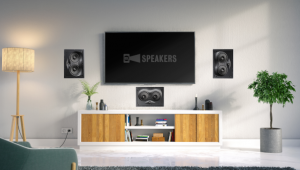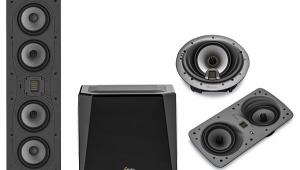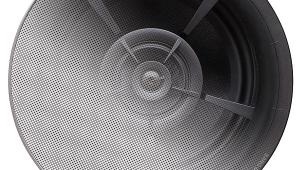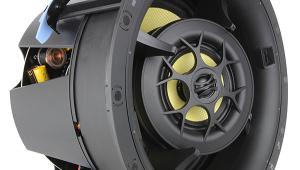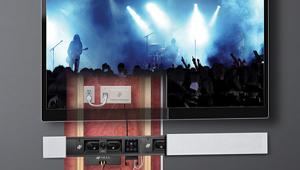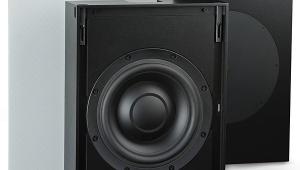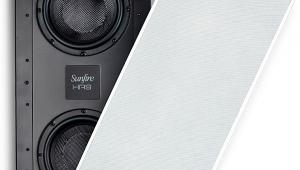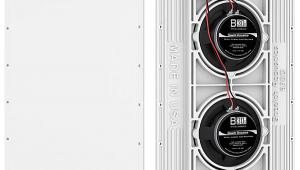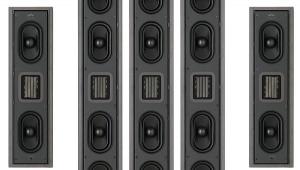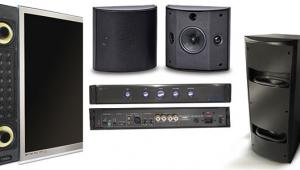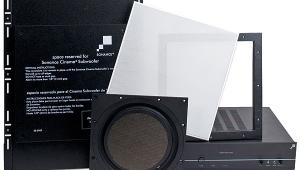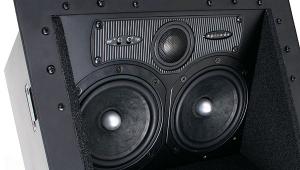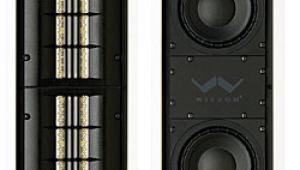Polk LC265i In-Wall Speaker System
I've come to look at home theater's many worlds much like various animals of the same species—common bonds clearly exist, but, at the same time, differences abound. Home theater works the same way. You've got high end and entry level, hobbyist and mass market, retail and custom install, and so on. They're all similar but distinctly different—particularly custom-install components. Anyone familiar with custom A/V systems will tell you that, if you'll allow me a bad pun, they're a very different animal.
That difference is usually most pronounced in speakers. Floorstanding towers and bookshelf models dominate the conventional speaker landscape, while in-wall speakers are the undisputed king of custom installs. The debate rages on over how much of a performance compromise in-walls represent, as well as the inevitable price that consumers usually must pay for aesthetic benefit. I know this, though: In-walls have gotten a lot better in recent years. While all in-walls may embody a certain degree of design compromise, some make the sonic effects of that compromise far less evident than others.
Enter the LCis
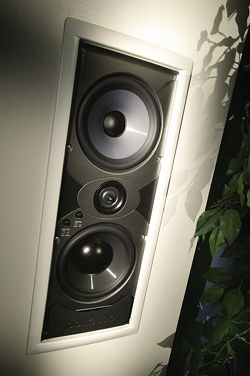 Polk Audio's LC265i ($650) is a good example of how far in-wall speakers have come. The LCi in-wall series is based on Polk's well-regarded LSi standalone-speaker series, and it borrows many of the same design principles. Proprietary Polk technologies like Dynamic Balance, the result of a design tool that analyzes the full electromagnetic and mechanical system to unveil and combat modal resonance, and Power Port, which uses a unique cone-shaped deflector at the mouth of the port to reduce turbulence, are at work in the LCi Series. The midbass cones are made of an aerated polypropylene material that looks to suppress cone resonance without adding mass, and you can angle the tweeters up to 15 degrees for better imaging and more-accurate-sounding high-frequency response, as well.
Polk Audio's LC265i ($650) is a good example of how far in-wall speakers have come. The LCi in-wall series is based on Polk's well-regarded LSi standalone-speaker series, and it borrows many of the same design principles. Proprietary Polk technologies like Dynamic Balance, the result of a design tool that analyzes the full electromagnetic and mechanical system to unveil and combat modal resonance, and Power Port, which uses a unique cone-shaped deflector at the mouth of the port to reduce turbulence, are at work in the LCi Series. The midbass cones are made of an aerated polypropylene material that looks to suppress cone resonance without adding mass, and you can angle the tweeters up to 15 degrees for better imaging and more-accurate-sounding high-frequency response, as well.
The 2.5-way LC265i uses a cascaded crossover system for its two 6.5-inch drivers, making one a midbass driver and the other a bass-only driver. The latter is low-pass-filtered at 250 hertz (12-decibel-per-octave slope), and the former at 2 kilohertz (12 dB per octave). The tweeter is high-pass-filtered at 2 kHz (18 dB per octave). You can address room peculiarities with a wall-distance toggle switch, which introduces a band-reject filter to flatten response and minimize midbass boom without sacrificing deep bass response in cases where the speaker is mounted close (fewer than 2 feet) to the sidewalls. A band-reject filter can also be engaged for the tweeter, which looks to reduce harshness caused by hard, reflective surfaces.
The LC265i's best environment-control feature, though, is the optional Performance Enclosure. An in-wall's performance is affected by what's behind it as well as what's in front of it, particularly in regards to the internal volume of the wall cavity in which it's mounted. Polk's Performance Enclosure cabinets are designed to be mounted in the wall behind each LC265i, with multiple sizes available for various types of wall construction. These cabinets provide proper internal volume and damping material for better bass performance. Minimizing sound leakage into adjacent rooms is an added bonus.
The Sound of Stealth
One of the first things that grabbed my ear with two-channel material was the LC265i speakers' excellent imaging, despite the fact that you won't be able to toe them in. I used the Performance Enclosures as a matter of necessity (after all, we can't cut holes in our walls every time we do an in-wall review), although I probably would've used them anyway, as they do eliminate several variables. While I wasn't able to toe-in the speakers, I did angle the front speakers' tweeters in toward the listening position. The imaging was solid and consistently centered—so much so that I had to confirm that the center-channel speaker wasn't operating. Vocal localization was dead-on—with software that supported this, of course—and everything else spread out nicely across a deep, well-defined front stage. Stevie Ray Vaughan's "Tin Pan Alley" from the second Burmester collection was a prime example. Stevie Ray's voice and masterful guitar work took center stage while the accompanying elements, few as they may be here, subtly shaded the left and right areas just as the recording intended them to.
The outstanding imaging and stage definition continued with two-channel, high-resolution material, and the stage naturally opened up with multichannel music demos. Bucky Pizzarelli's Swing Live (Chesky, DVD-Audio or SACD) demonstrated both ends of the LC265i system's spectrum, with a dominating presence from the front channels and a subtle, delicate feel from the surrounds. As you might expect, the LC265i didn't deliver the same full-bodied, deep-staged profile that a quality tower speaker would, particularly (and obviously) on the bottom end. As with virtually all in-wall systems, a subwoofer is a necessary accompaniment—I used the B&W ASW 650 ($700). Still, the LC265i clearly has more real estate to offer and a punch to its sound that many of its in-wall peers don't; in the apples-to-apples comparison, it fares rather well in terms of presence and full exploitation of the frequency range. It's particularly impressive that it does this without requiring a large wall-print, if you will, as some more-potent in-walls do. Once you've got the LC265i tucked away, it's little more than an afterthought visually.
The same characterization of audible presence without visual presence expectedly applied to movie soundtrack demos, where the LC265i got a great deal out of what it had to work with, particularly with the enclosures adding a degree of stability to the equation. I expected much less than what I got out of the center channel. Again, its sound didn't have the same richness and generous proportions that a well-designed, dedicated center channel can generate, but it was far less boxy and far more resistant to compression than I expected from an in-wall, even a good one. It was seldom overwhelmed by the occasionally absurd demands that movie soundtracks put on a center channel.
All five channels kicked in with large, demanding passages like the Manassas battlefield cannonade from Gods and Generals (chapter 10). The front channels handled themselves nicely down to the 80-Hz crossover point that I set them at, leaving little in the way of gaps between themselves and the sub. The surrounds weren't as easy to localize as I thought they would be, being direct-radiators. With movies, I angled the tweeters slightly away from the listening position to avoid beaming and other directional cues. The system handled the pronounced front-to-back and side-to-side sweeps that this passage contains rather well, creating a stable, cohesive soundstage with a good degree of separation of individual elements.
There's no shortage of in-wall models to choose from these days. As with any speaker form, your charge as the buyer is to distinguish between those that were slapped together to capitalize on a fad or an aesthetic advantage and those that were designed with sonic performance firmly in mind. Polk's LC265i clearly belongs in the latter category, with all of the aesthetic benefits of an in-wall (a smallish in-wall, at that) and performance with music and movies that will make any concerns you may have about mandated performance compromises a lot easier to reconcile. In-walls may be a different breed, but their ultimate goal of faithful reproduction of source material remains the same, and the LC265i takes this duty as seriously as most any in-wall I've listened to.
Highlights
• Big sound for an in-wall, with limited visual impact
• Environment-control features like a rotating tweeter and Performance Enclosure
- Log in or register to post comments
